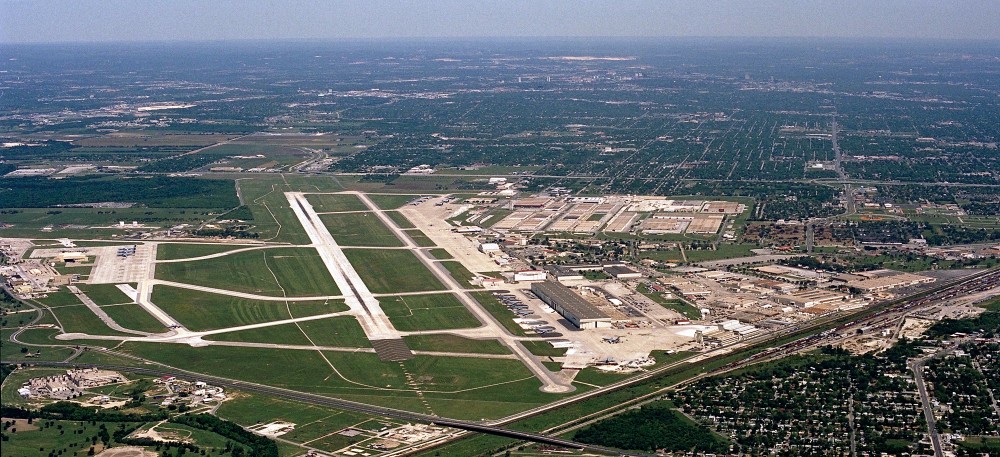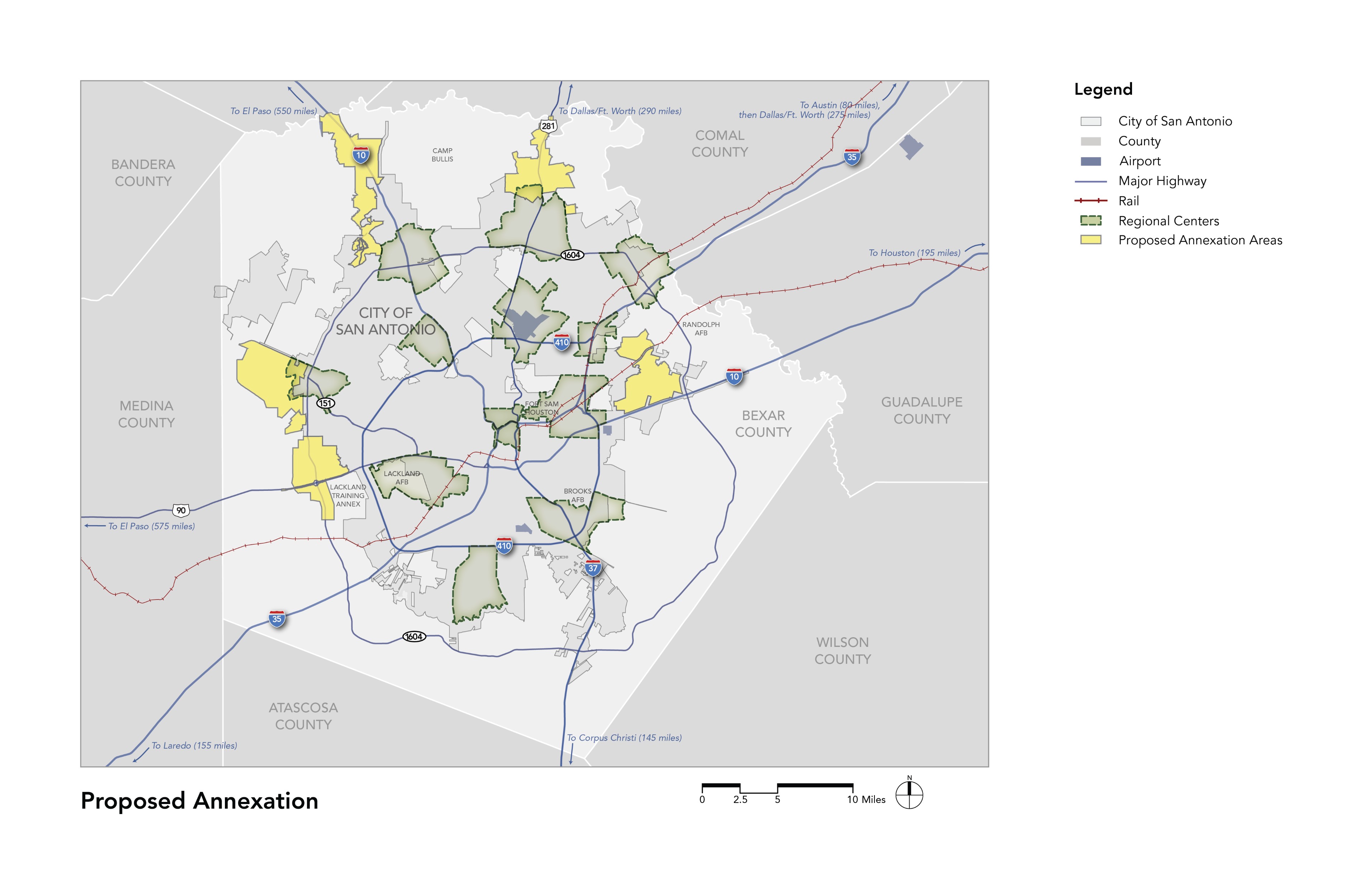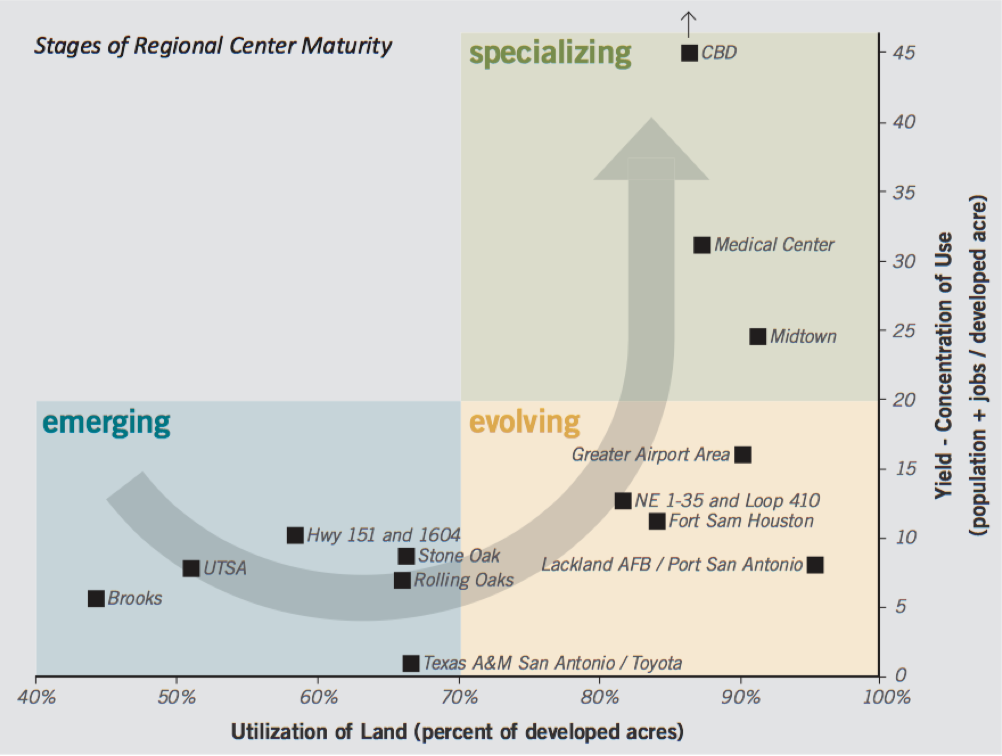Implementation
Regional Planning
Introduction
The city continually participates in planning efforts with regional partners. However, SA Tomorrow identified the need to enhance these efforts. The city needs to take a more proactive approach to address issues that cross jurisdictional boundaries. To achieve this, the CPP has been modified to include regional planning as a plan type, ensuring Department of Planning & Community Development staff and resources are devoted to this area of planning. There are three main aspects to the regional planning approach:
- Regional Plans;
- Perimeter Plans; and
- San Antonio’s annexation strategy.
REGIONAL PLANS
Regional Plans address broad topics such as transportation, utility service areas and provision and natural resource issues that span multiple jurisdictions. These plans preserve and enhance the future of many communities across South Texas, including San Antonio. By taking an active role in these plans our city can advocate the vision and goals articulated in the three plans comprising the SA Tomorrow process. Participation in these cross- jurisdictional efforts promotes the coordination of policies and investments making them more efficient and impactful.

PERIMETER PLANS
Citywide Functional Plans direct specialized components of city planning such as transportation, economic development, housing, natural resources and sustainability.
ANNEXATION STRATEGY
A major analysis of San Antonio’s current Annexation Policy and Annexation Strategy documents was conducted as part of the SA Tomorrow process. To integrate the SA Tomorrow Comprehensive Plan policies into the city’s Annexation Policy document, this effort:
- Developed recommended revisions to the Annexation Policy;
- Evaluated the 2013 Annexation Strategy using the revised Annexation Policy; and
- Provided recommended changes to the city’s annexation and regional planning strategies.
Annexation Policy Changes
A complete version of recommended revisions to the city’s Annexation Policy is included in the Appendix to this Plan. These recommendations were the result of the Plan Element Working Group Annexation process. High level recommendations to the Annexation Policy include:
Make the basis for annexation more focused and aligned with the goals of the city.The current basis for annexation—the reasons the city would choose to annex—are broad and provide little direction for why to annex. The peer cities analyzed had more focused and fewer reasons for annexation, which makes the subsequent policy more focused and easier to follow. The recommended revised basis for annexation is provided later in this report. The major themes (reasons) to annex identified in the outreach efforts were the need to protect natural, cultural, historic, military and economic assets and to ensure a more orderly development pattern.
Provide annexation policies that align with the context of the areas being considered for annexation.The current annexation policy statements do not specify condition or context in which they apply to, therefore, it is difficult to understand if a policy should be considered because it may not be applicable to the area being considered. The city should organize policies by three contexts: all areas; undeveloped areas; and developed areas. These three contexts make using the policy document easier and provide more clarity to reasons why the city should consider annexing land that is undeveloped or developed, as they often differ and sometimes are contradictory.
Goals and policies related to the desired development pattern and overall city form should be incorporated into the annexation policy and considered when annexing. The current annexation policies provide minimal guidance or evaluation criteria related to the desired form of the built environment the city is hoping to achieve through this Comprehensive Plan. The city should incorporate policies specific to the city’s desired development Growth and City Form Plan Element Working Group Annexation Policies form into the annexation policies and use the annexation policies developed by the Growth and City Form Plan Element Working Group as the overriding policies for annexation. These policies are included in the revised Annexation Policy document attached to this report and are listed separately in the sidebar to the right. Lastly, the city should consider and measure how well potential annexation areas reinforce the desired city form.
Annexation Strategy and Regional Planning Priorities and Recommendations
Annexation has several implications on the city, both positive and negative. Not annexing also has several implications. These implications needed to be evaluated in the development of any annexation strategy. The implications identified during the annexation process of SA Tomorrow are described in the SA Tomorrow Annexation Policy and Strategy Assessment found in the Appendix. Also provided in this assessment are the recommended changes to the city’s annexation strategy and approach to regional planning. The specifics regarding each recommendation are provided in the assessment, and the high level recommendations are as follows:
Regardless of future annexation activities, these priorities should be paramount.
- The long-term growth plans of the city, SAWS and Bexar County should be coordinated and documented specifically in policies related to the city’s ETJ, SAWS’ CCN areas for water and sewer and utility service agreements.
- The city, Bexar County and other regional jurisdictions and partners need to develop a strategic, regional approach to growth that reinforces regional goals related to transportation, sustainability and resource protection. The regional growth approach must identify ways to reduce the amount of urban level development in the unincorporated portion of Bexar County.
- The city should prioritize the protection of it's natural resources, specifically the Edwards Aquifer, and enhance policies and tools needed to protect the continued recharge of the aquifer and water quality within the aquifer.
- The city should consider annexing any areas that have the greatest potential for aiding the protection of natural, cultural, historic, military and economic assets.
- The city must ensure annexation policies assure the long-term fiscal health of the city.
- The city must ensure annexation policies enable the city to balance resources in an equitable manner and do not lead to disinvestment in the existing portions of San Antonio.

Annexation Strategy and Regional Planning Recommendations
Annexation strategies and regional planning recommendations include:
- The city should reexamine the existing priority annexation areas. The current priority annexation areas seem to be the logical areas for continued annexation. However, they should be revisited to ensure they match with the revised policy and goals developed through SA Tomorrow and consider the priorities of the city for annexation.
- The city and Bexar County should meet to develop a coordinated approach and policy regarding development in the unincorporated portion of Bexar County.The ultimate goal is to develop a joint approach and policy to future growth. The meeting(s) should focus on how the city and Bexar County can work jointly to mitigate the negative impacts of new development and identify tools and strategies to address impacts. As a coordinated approach is developed, coordination with regional stakeholders (utility providers, service providers and other stakeholders) should be held to help vet the approach.
- The city and SAWS should set up regular meetings to coordinate growth plans and address impacts of planned development.The city and SAWS should hold quarterly or bi-annual meetings to coordinate on planned development (both greenfield and infill) and future growth plans. At least annually, a meeting should be focused on long-term growth issues and identifying potential conflicts with long-term growth plans that could be mitigated. CPS and other providers should be included in long-term growth discussions.
- The focus of the city’s annexation strategy should be oriented around protecting its assets and long term opportunities (natural, cultural, historic, military and economic).The extension of city services and regulations should provide a significant improvement to annexed areas. The implications of non-action should be analyzed to identify the upside to annexation and potential mitigation approaches that could be used instead of annexation.
- Annexation areas should have multiple reasons for being considered for annexation that fit within the revised basis for annexation.The city should not explore large-scale annexations for one singular, primary reason or purpose. Annexing primarily to ensure new development is built to city standards should not be the only goal. Annexing just to protect an asset should not be the only goal. The annexation should serve multiple purposes and fit within a coordinated growth strategy.
- Annexation should not be the primary tool and strategy used by the city to protect its assets.A toolbox of alternatives to annexation to achieve goals in lieu of annexation should be developed.
- The city should modify its fiscal impact analysis policy and methodology for reviewing annexation areas.The findings from the fiscal impact studies completed recently should City of San Antonio | Comprehensive Plan be incorporated into the annexation policy document and the revised approach should be used to reassess the priority annexation areas.
The city should avoid annexing areas where there is limited opportunity to impact the quality of life through city services, investment and regulations. Large-scale annexation can have unforeseen implications that may inhibit the city from achieving its goals. The benefit to the existing area and the city should be considered, as well as the implications of annexing versus not-annexing.
Planning Emphasis and Techniques
San Antonio’s 13 regional centers each offer unique attributes and vary greatly in development maturity. Some centers are still developing and have low land utilization, while others are more densely built-out and have a greater diversity and concentration of uses. This is demonstrated by differing levels of infrastructure, transportation options and community amenities. Recognizing and analyzing the distinct conditions and challenges of each regional center necessitates a nuanced and targeted planning approach. Such an approach will help each center advance and fulfill its role in the city, either as a hub of specialized employment or as a true vibrant, mixed-use place for our residents to live, work and play.
Emerging – Emerging centers typically have significant amounts of undeveloped land, often resulting in low-density urban form. Plans for emerging centers should focus on clarifying the long-term vision; creating a regulatory and policy environment supportive of higher-density and a greater mix of uses; and aligning the center with citywide transportation and infrastructure initiatives.
Evolving – Evolving centers are more developed, but still have low density, require a greater mix of uses and offer limited community amenities. Plans for evolving centers should focus on providing and adapting infrastructure that supports higher density development; encouraging a mix of uses including a strong economic base; and investing in amenities that enhance the public realm.
Specializing – Specializing centers have a high density of uses and are largely built-out. Plans for these centers should be more fine-grained and tactical in nature; focus on remaining opportunity sites; and address missing attributes and amenities.




